
The North Atlantic Treaty Organization, also called the North Atlantic Alliance, is an intergovernmental military alliance between 31 member states – 29 European and two North American. Established in the aftermath of World War II, the organization implemented the North Atlantic Treaty, signed in Washington, D.C., on 4 April 1949. NATO is a collective security system: its independent member states agree to defend each other against attacks by third parties. During the Cold War, NATO operated as a check on the threat posed by the Soviet Union. The alliance remained in place after the dissolution of the Soviet Union and the Warsaw Pact, and has been involved in military operations in the Balkans, the Middle East, South Asia, and Africa. The organization's motto is animus in consulendo liber.
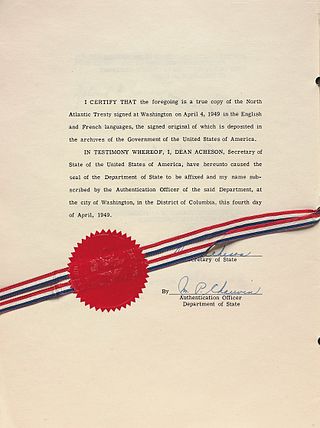
The North Atlantic Treaty is the treaty that forms the legal basis of, and is implemented by, the North Atlantic Treaty Organization (NATO). The treaty was signed in Washington, D.C., on 4 April 1949.

The International Security Assistance Force (ISAF) was a multinational military mission in Afghanistan from 2001 to 2014. It was established by United Nations Security Council Resolution 1386 pursuant to the Bonn Agreement, which outlined the establishment of a permanent Afghan government following the U.S. invasion in October 2001. ISAF's primary goal was to train the Afghan National Security Forces (ANSF) and assist Afghanistan in rebuilding key government institutions; it gradually took part in the broader war in Afghanistan against the Taliban insurgency.
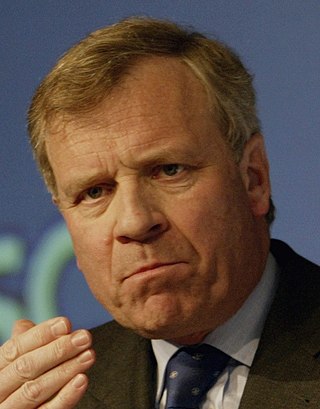
Jakob Gijsbert "Jaap" de Hoop Scheffer is a Dutch retired politician, jurist and diplomat who served as the eleventh Secretary General of NATO from January 2004 to August 2009. A member of the Christian Democratic Appeal (CDA), which he led from March 1997 to October 2001, he served as Minister of Foreign Affairs from July 2002 until December 2003 under Prime Minister Jan Peter Balkenende.
A national caveat is a restriction that North Atlantic Treaty Organization (NATO) members place on the use of their forces. NATO General Bantz J. Craddock, NATO's Supreme Allied Commander Europe (SACEUR), was quoted as saying all caveats must be removed in February 2007 in an article written by the Associated Press. The level of constraints is tied directly to the level of national interests a country has in a particular mission and the level of risk it is willing to take.
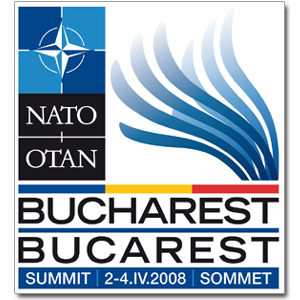
The 2008 Bucharest Summit or the 20th NATO Summit was a NATO summit organized in the Palace of the Parliament, Bucharest, Romania on 2 – 4 April 2008.

The 2004 Istanbul summit was held in Istanbul, Turkey from 28 to 29 June 2004. It was the 17th NATO summit in which NATO's Heads of State and Governments met to make formal decisions about security topics. In general, the summit is seen as a continuation of the transformation process that began in the 2002 Prague summit, which hoped to create a shift from a Cold War alliance against Soviet aggression to a 21st-century coalition against new and out-of-area security threats. The summit consisted of four meetings.
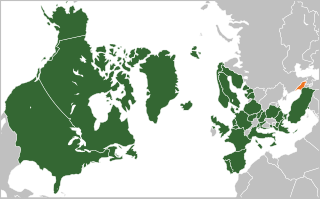
Georgia and the North Atlantic Treaty Organization (NATO) enjoy cordial relations. Georgia is not currently a member of NATO, but has been promised by NATO to be admitted in the future.

NATO is a military alliance of thirty-one European and North American countries that constitutes a system of collective defense. The process of joining the alliance is governed by Article 10 of the North Atlantic Treaty, which allows for the invitation of "other European States" only and by subsequent agreements. Countries wishing to join must meet certain requirements and complete a multi-step process involving political dialog and military integration. The accession process is overseen by the North Atlantic Council, NATO's governing body. NATO was formed in 1949 with twelve founding members and has added new members nine times. The first additions were Greece and Turkey in 1952. In May 1955, West Germany joined NATO, which was one of the conditions agreed to as part of the end of the country's occupation by France, the United Kingdom, and the United States, prompting the Soviet Union to form its own collective security alliance later that month. Following the end of the Franco regime, newly democratic Spain chose to join NATO in 1982.

Relations between Ukraine and the North Atlantic Treaty Organization (NATO) started in 1991. Ukraine applied to integrate with a NATO Membership Action Plan (MAP) in 2008. Plans for NATO membership were shelved by Ukraine following the 2010 presidential election in which Viktor Yanukovych, who preferred to keep the country closer to Russia, was elected President. Yanukovych fled Ukraine in February 2014 during the Revolution of Dignity. The interim Yatsenyuk Government initially said that it had no plans to join NATO. However, following the Russian annexation of Crimea and Russian military support for armed separatists in eastern Ukraine, the Second Yatsenyuk Government made joining NATO a priority. In February 2019, the Ukrainian parliament voted to amend the Constitution of Ukraine to state Ukraine's goal of NATO and European Union membership.

Relations between the NATO military alliance and the Russian Federation were established in 1991 within the framework of the North Atlantic Cooperation Council. In 1994, Russia joined the Partnership for Peace program, and on 27 May 1997, the NATO–Russia Founding Act (NRFA) was signed at the 1997 Paris NATO Summit in France, enabling the creation of the NATO–Russia Permanent Joint Council (NRPJC). Through the early part of 2010s NATO and Russia signed several additional agreements on cooperation. The NRPJC was replaced in 2002 by the NATO–Russia Council (NRC), which was established in an effort to partner on security issues and joint projects together. Due to the 2022 Russian invasion of Ukraine, relations became very tense after the NATO military alliance imposed sanctions against Russia. Russia placed all member states of NATO on a list of "unfriendly countries" along with Taiwan, Japan, South Korea, Singapore, the United States, Canada, Australia, New Zealand, Switzerland, Micronesia and Ukraine.

NATO CCD COE, officially the NATO Cooperative Cyber Defence Centre of Excellence, is one of NATO Centres of Excellence, located in Tallinn, Estonia. The centre was established on 14 May 2008, it received full accreditation by NATO and attained the status of International Military Organisation on 28 October 2008. NATO Cooperative Cyber Defence Centre of Excellence is an international military organisation with a mission to enhance the capability, cooperation and information sharing among NATO, its member nations and partners in cyber defence by virtue of education, research and development, lessons learned and consultation.
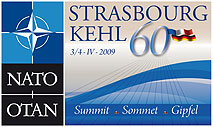
The 2009 Strasbourg–Kehl Summit was a NATO summit of heads of state and heads of government held in Strasbourg, France, and in Kehl and Baden-Baden, Germany, on 3–4 April 2009. The summit marked the 60th anniversary of the establishment of North Atlantic Treaty Organization (NATO). Primarily a celebratory 60th-anniversary event, the agenda included a number of urgent topics commanding the NATO leaders' attention.
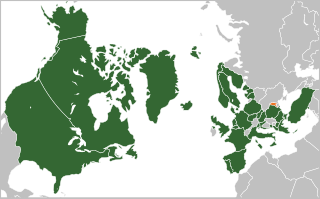
Official relations between Moldova and NATO began in 1992 when Moldova joined the North Atlantic Cooperation Council. However, as Moldova's neutrality is enshrined in its constitution, there are no official plans for Moldova to join the organization.
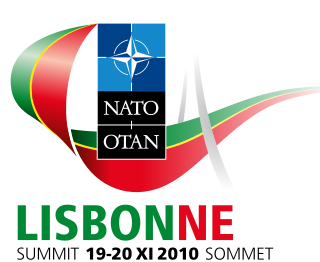
The 2010 Lisbon summit was a meeting of the heads of state and heads of government of NATO held in Lisbon, Portugal, on 19 and 20 November 2010.
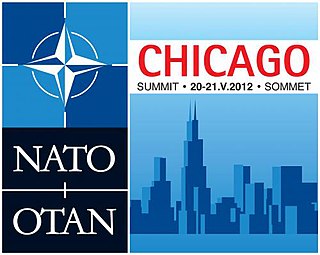
The 2012 Chicago summit was a meeting of the heads of state and heads of government of the North Atlantic Treaty Organization (NATO), held in Chicago, Illinois, on 20 and 21 May 2012. This was the first time ever that a NATO summit was held in the United States outside of the nation's capital, Washington, D.C. The event was originally scheduled to coincide and be held after the 2012 G8 summit in Chicago as well, but the G8 summit was later rescheduled to be held at Camp David.
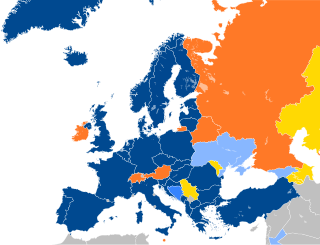
NATO maintains foreign relations with many non-member countries across the globe. NATO runs a number of programs which provide a framework for the partnerships between itself and these non-member nations, typically based on that country's location. These include the Euro-Atlantic Partnership Council and the Partnership for Peace.

The relationship between Azerbaijan and NATO started in 1992 when Azerbaijan joined the newly created North Atlantic Cooperation Council. Considerable partnership between NATO and Azerbaijan dates back to 1994, when the latter joined Partnership for Peace program. Azerbaijan established a diplomatic Mission to NATO in 1997 by the Presidential Decree on 21 November.

The Bucharest Nine or the Bucharest Format is an organization founded on 4 November 2015 in Bucharest, Romania, at the initiative of the President of Romania Klaus Iohannis and the President of Poland Andrzej Duda during a bilateral meeting between them. Its members are Bulgaria, the Czech Republic, Estonia, Hungary, Latvia, Lithuania, Poland, Romania and Slovakia. Its appearance was mainly a result of a perceived aggressive attitude from Russia following the annexation of Crimea from Ukraine and its posterior intervention in eastern Ukraine both in 2014. All members of the B9 were either part of the former Soviet Union (USSR) or members of the defunct Soviet-led Warsaw Pact.

Armenia and the North Atlantic Treaty Organization have maintained a formal relationship since 1992, when Armenia joined the North Atlantic Cooperation Council. Armenia officially established bilateral relations with NATO in 1994 when it became a member of NATO's Partnership for Peace (PfP) programme. In 2002, Armenia became an Associate Member of the NATO Parliamentary Assembly.























